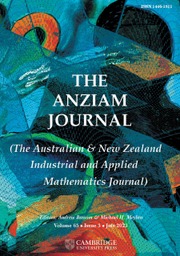Crossref Citations
This article has been cited by the following publications. This list is generated based on data provided by Crossref.
Lim, S. C.
and
Teo, L. P.
2008.
Sample path properties of fractional Riesz–Bessel field of variable order.
Journal of Mathematical Physics,
Vol. 49,
Issue. 1,


